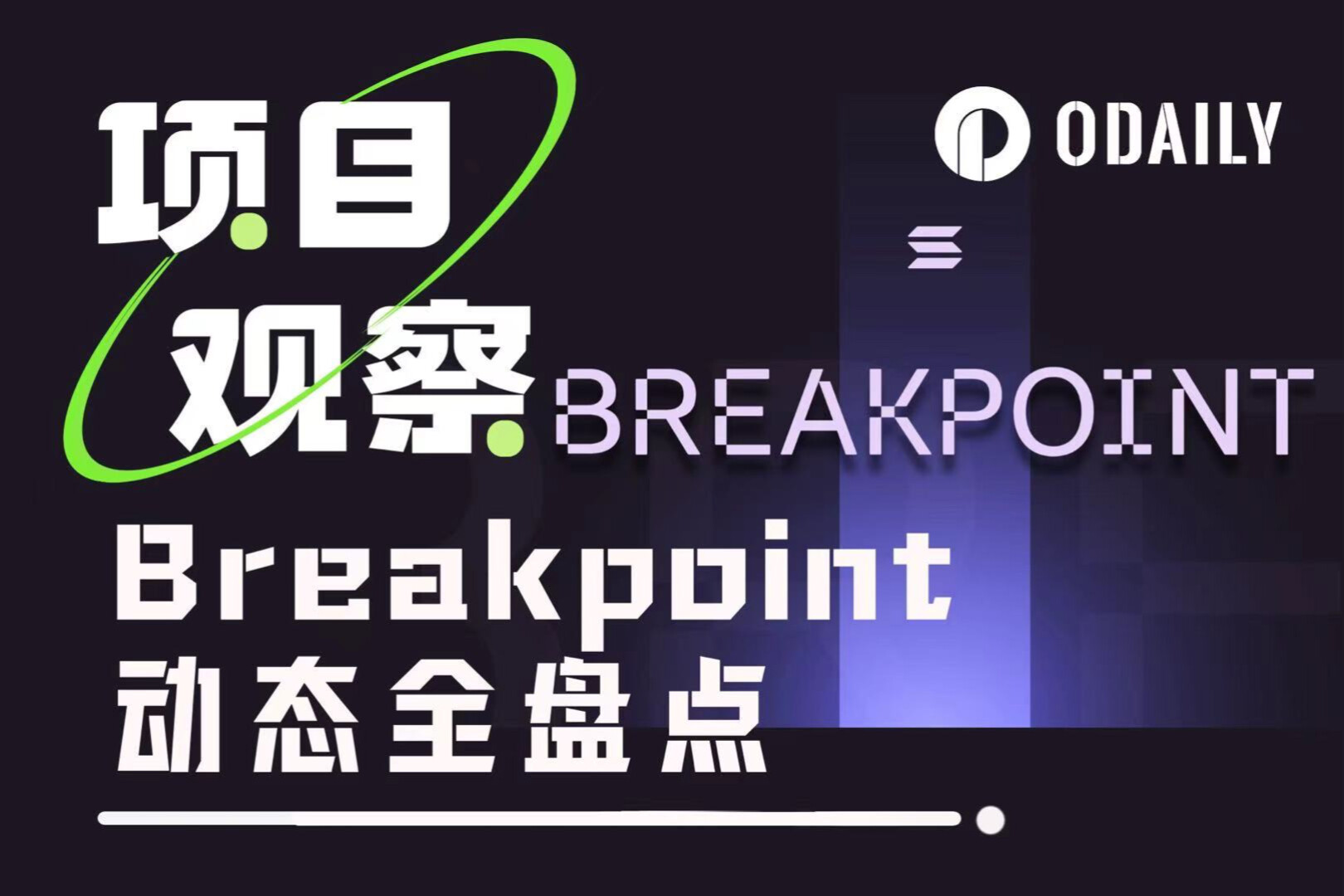以太坊研究员:未来我们往何处去?
原文作者:Mike、Stokes
原文编译:Kate,火星财经
概述
自 Vitalik 在纸上发表「以 Rollup 为中心的以太坊路线图」以来,已经过去了三年多。虽然在此期间发生了巨大的变化,但随着以太坊社区继续沿着这条道路前进,愿景就像美酒一样陈年。信标链的启动、合并、提款以及即将到来的 proto-danksharding 分叉体现了为协议做出贡献的个人和团队在工程、研究和协调方面的卓越表现。然而,随着 2024 年的到来,噪音比以往任何时候都要多。我们觉得用更新的世界观来恢复「以 Rollup 为中心的路线图」是值得的。现代问题可能需要新的解决办法。
我们不是从问题开始,评估哪个是最紧迫或最值得关注的,而是建议以价值观为出发点。虽然这可能看起来很教条,与现实脱节,但我们相信它是有用的,有助于回答「要解决的正确问题是什么?」我们采用「过去、现在、未来」的结构来提供协议演变的整体视图。第 1 节 ( 过去 ) 概述了最近以太坊的历史。第 2 节 ( 现在 ) 强调了当今的关键问题。第 3 节和第 4 节暂停时间线,专注于以太坊做得很好的地方 ( 第 3 节 ),以及以太坊没有尝试做的事情 ( 第 4 节 )。这个多部分的插曲为第 5 节 ( 未来 ) 中提出的前瞻性计划奠定了基础,我们将其细分为近期 ( 2024 年 Prague/Electra 分叉[§ 5.1 ]) 和中期 ( 未来 3-4 年[§ 5.2 ])。
最后,我们想强调的是,这篇文章仅代表作者的观点。所表达的观点绝不代表 EF 的「官方」观点 ( 甚至提到这一点都感觉很冒昧,但为了谨慎起见,我们还是这么做了 )。第 1-4 节的目标是客观性,因为我们为第 5 节中描述的更主观的想法奠定了基础。
第 1 节 - 以太坊简史
^会读成那样
在展望未来之前,让我们来盘点一下以太坊的现状,以及我们是如何走到今天的。自 Vitalik 于 2020 年 10 月发表经典作品「以 rollup 为中心的以太坊路线图」以来的 3.5 年里,发生了很多变化。将协议升级作为进展的「里程标记」,我们关注每个共识升级的「要点」。有关执行层升级和每个分支的 EIP 的详尽列表,请参阅以太坊历史页面。
[ 2020 年 12 月 1 日]- 信标链起源
在今年最后一个月仅仅 35 秒的时间里,我们就有了第一个信标链块 ( 我们可能应该将 slot 时间调整为 0, 12, 24, 36, 48 ,而不是 11, 23, 35, 47, 59( 幻灯片 41),但是唉 )。
请看公告。
[ 2021 年 10 月 27 日]-Altair
这个分叉需要更新验证者激励机制,并增加轻量级客户端支持。它还作为共识层的「测试分叉」,为合并做准备。
[ 2022 年 9 月 15 日]- Bellatrix / Paris
「合并」。以太坊现在完全是权益证明。
[ 2023 年 4 月 12 日]- Capella / Shanghai
「取款」。一个小分叉来关闭权益证明机制的循环。
[ 2024 年 3 月 13 日 ( 预计 )]——Deneb / Cancun
「Proto-danksharding (EIP- 4844)」。升级数据分片。
在这种缩小的粒度下,升级路径的基本原理很清楚。
从 2020 年 12 月到 2023 年 4 月 ( 约 2.5 年 ),核心开发人员和研究人员执行了权益证明马拉松™。这次合并在工程、研究、协调和协作方面的水平仍然令人震惊,事实上,它进行得如此顺利,证明了社区的技术卓越。
从 2023 年初到今天 ( 1 年 ),社区的重点已经转移到发布 proto-danksharding (EIP-4844)。「Dencun」代表了通过降低 L2 的数据成本来扩展以太坊的第一步。虽然这次升级被证明是复杂的,但终点已经在眼前——主网分叉的日期是 2024 年 3 月 13 日。
通过这些硬分叉制定的战略是明确的、有针对性的,并且与以 rollup 为中心的路线图一致。Tim Beiko 把每个叉子比喻成「音乐节艺人名单」。虽然许多表演者 (EIP) 被捆绑在一个事件中,但一个头条新闻定义了分叉。到目前为止,头条新闻一直是「信标起源」、「验证者激励」、「合并」、「取款」和「原始数据分片」。即使有后见之明的好处,到目前为止,我们不会改变任何硬分叉的重点。
第 2 部分 - 2024 年的以太坊,氛围检查
有人对「Wicked」的新电影感到兴奋吗?
好了,别再拍拍屁股,沾沾自喜地回顾过去了。让我们来看看今天的以太坊。正如 Dorothy 在上图中指出的那样,「我们已经不在 2020 年了」。现代问题需要诚实的反思。随着生态系统的发展和专业化,许多话题都在争夺关注和行动。由此产生的嘈杂声使得人们很难分辨什么是重要的,以及为什么重要。我们将许多讨论线提炼为三个核心支柱:扩展,MEV[ 1 ]和质押 ( 大致与 Vitalik 路线图上的「Surge」,「Scourge」, 和「Merge」相关 )。尽管如此,我们还是强调了与每个主题相关的几个关键问题。
1.扩展——以太坊应该如何继续扩展?
• 鉴于替代 DA 源的激增,以太坊应该如何考虑扩展 DA?
• 当我们追求数据分片路线图时,以太坊是否应该尝试扩展执行?
• 以太坊是否应该有一个明确的故事来处理由 L1 实现的跨链流动性碎片化和 L2 可组合性?
2.MEV——以太坊应该如何响应 MEV?
• 当前的构建者中心化状态是否可以接受?
• 以太坊如何在幂律分布式区块生产世界中保持强大的抗审查特性?
• 以太坊应该如何应对对 mev-boost 的依赖以及最近围绕协议外软件的问题 (prysm bug、low-carb crusador、bloXroute optimistic failure)?
• 以太坊应该对主网计时游戏的出现做出回应吗?
3.质押——以太坊质押应该如何发展?
• 以太坊在减少质押中心化方面应该有多固执己见?
• 以太坊是否应该积极考虑保留一些 LST 功能?
• Coinbase 和其他中心化交易所积累大量以太坊质押的中期风险是什么 ( 特别是考虑到比特币 ETF 的托管人可能会转化为 ETH 和质押的 ETH ETF 文件 )?
• 我们如何不惜一切代价保护个人质押者,考虑到他们已经是网络中相对较小的一部分?
• 怎样才能充分地解决再质押的风险?
虽然这堵问题墙让人感到害怕,但我们不能让它导致分析瘫痪。随后的章节旨在重新构建围绕协议目标 (§ 3) 和非目标 (§ 4) 的讨论。
第 3 节 - 以太坊的特殊之处是什么?
暂停我们目前的时间线,让我们看看以太坊的例外主义®。由于所有这些外部压力,以太坊优先级的很少明确。与其自上而下地推理哪些风险是「最危险的」,我们建议自下而上地重新审视以太坊是什么以及它的独特之处✨。
1. 去中心化,抗审查,可信中立,无许可,无信任。
• 这些描述符是以太坊价值的根源。每一个都有稍微不同的含义 ( 我们不会吹毛求疵 ),但它们都利用了同样的能量,体现了协议的精神。他们是「it-factor」。
• 去中心化是提供抗审查阻力的一种手段。如果没有去中心化,一个政党或集团就可以对区块链施加影响,有了这种权力,它被利用只是时间问题。
• 抗审查是提供可信中立性的一种手段。根据定义,一个系统必须平等对待所有个人,才能做到可信的中立。
• 抗审查制度是保持无许可状态的一种手段。无许可性涵盖了区块链的使用 ( 作为交易签名者 ),部署应用程序的能力 ( 作为开发人员 ),以及在没有任何可信第三方 ( 作为验证者 ) 的情况下与区块链交互的可行性——每一个都是至关重要的。
• 个人质押者[ 2 ]使以太坊去中心化。以太坊设计中的每一个决定都必须考虑到个人质押者。没有个人质押者,就没有有意义的去中心化。
• 对审查制度的抵制表现在黑天鹅时刻。只有当它成为唯一重要的属性时,你才会觉得它是相关的。例如,在加拿大,保护你的私有财产权直到 2022 年被严重剥夺时才感到紧迫。
2.社区。
• 去中心化治理。以太坊的目标是继续比任何单一实体都要大得多。开源精神贯穿于客户端软件、协议规范、研究、事件、协调等各个方面。
• 客户端的多样性。以太坊拥有一个繁荣的多客户端生态系统。撇开技术优势不谈,客户端多样性创造了一大批熟悉协议的开发人员,并为改进协议贡献了宝贵的精力、技能和观点。
• 以太坊热情而亲切。「人」( 通常被称为第 0 层 ) 是必不可少的组成部分。以太坊在全球定期召开会议,拥有成千上万的人际关系,以及普遍的良好氛围,长期以来一直是新加密参与者的「数字家园」。
3.以太币资产。
• 分配。虽然我们相信权益证明是以太坊的正确共识算法 + 女巫保护,但不可否认的是,拥有七年的工作量证明是一个伟大的代币分配机制。
• Lindy。通过长期存在,以太坊网络已经证明了它的反脆弱性,这创造了对网络代币及其价值主张的信任。
• 效用。我们喜欢把比特币比作数字黄金,把以太币比作数字石油。毕竟,以太币是以太坊网络的 gas 代币。
• 货币属性。与它的模拟对手 ( 扩展石油类比 ) 不同,以太坊还具有货币属性 (DeFi 中的抵押资产,数字商品和经济安全的记账单位,整个生态系统的交换媒介 ),可以扩展其价值并赋予其「货币溢价」。以太币作为「互联网商品货币」的候选资格依然强劲。
• 价值是作为安全的必要条件。「超稳健货币」理论的核心原则是,网络的安全性取决于以太币资产的价值。我们认为这是真的。如果以太坊的目标是成为数万亿美元经济带宽的结算层,那么代表这些结算保证安全性的代币必须是有价值的。
• 网络效应。流动性、现有的应用程序和开发人员、EVM、快速增长的 L2 采用等,都有助于以太坊资产和整个以太坊生态系统的强大网络效应。
上述内容既不详尽,也不具有规定性。这些要点突出了以太坊差异化的要素。当我们现在将注意力转向协议的「非目标」时,这种列举尤其相关。根据我们的估计,专注于以下方面将是「只见树木不见森林」,即使这样做会带来短期利益。
第 4 节 - 以太坊没有尝试做什么?
「你又去传教了。」如果这是你目前的态度,那么这一部分就是为你准备的。与以太坊所擅长的相反,我们还试图确定以太坊网络的明确非目标 ( 在我们看来 )。
1.提供最友好的 L1 执行。
• 这是一个关键的起点,因为以 rollup 为中心的路线图 * 明确地 * 旨在将用户活动推到 L2。通过对数据进行分片而不是执行,以太坊采取了固执己见的立场,认为 L1 执行可能仍然昂贵,不适合日常交易。
• 由此产生的例子——当应用程序层开发人员抱怨长时间的 slot 和高费用时,事实仍然是以太坊 L1 不打算成为应用程序的地方。将以太坊设计为「L2 的最佳 DA 和结算层」可能直接与 L1 应用程序开发人员的愿望相矛盾。例如,减少时隙 (slot) 时间 ( 纯粹假设 ) 会极大地改善 L1 交易的用户体验,但会损害个人质押者社区。这似乎不值得做出这样的权衡。
• 然而,这并不意味着以太坊应该主动使 L1 的执行变得更糟。因为 L1 仍然为 L2 提供强制交易执行支持,所以确保在 L1 上进行交易处理仍然是合理的,这一点很重要。关于提高 gas 限制的讨论可能会有所帮助。
2. 提供最便宜的 DA 层。
• 这一点很重要,因为替代 DA 层和「模块化」区块链叙事继续获得动力。替代 DA 层不使用以太坊无法使用的任何神奇技术。相反,他们并不打算建立和培育一个个人质押者的生态系统。
• 由此产生的例子——以太坊不会以与这些网络相同的速率进行逐字节的扩展,因为以太坊不愿意在保持带宽(和计算)要求方面做出妥协,以保持个人质押者的合理要求。
• 然而,以太坊的目标是继续成为 block + blob 空间的「曼哈顿」。「足够快」地扩展 blob 空间以在不损害安全性的情况下保持高效用是至关重要的。以太坊已经占据了「catbird」的位置,从中受益。现有的流动性、可组合性、应用程序和 L2 的网络效应非常强大。以太坊 DA 应该继续在每安全价格方面为 Rollup 提供最佳价值。
3. 像创业公司一样运营。
• 如上所述,以太坊具有真正的去中心化治理。由于有多个共识和执行客户端,应用程序开发人员,基础设施提供商,应用程序层服务提供商,研究人员,教育工作者等,许多「参与游戏」和潜在利益冲突的人对协议的未来有发言权。以太坊治理不能也不应该试图模仿具有明确组织层次结构和集中决策的公司 / 初创公司的运营效率。
• 由此产生的例子——网络升级是一项艰巨的任务。许多外部人士抱怨升级之间的延迟,缺乏具体的时间表,以及 ACD 过程,但这艘船正在按计划工作!回想一下 § 1.
• 然而,以太坊仍然应该在去中心化的治理机制允许的范围内尝试有效和高效。虽然协议最终必须固化 ( 协议在实践中是缓慢变化的——参见 IP v4/IPv 6),但仍然有明显的改进来管理网络的长期生存能力。以太坊应该避免由于政治化而过早僵化,并继续执行路线图项目。
* 从演说台上走下来。* 虽然我们认为前一节没有争议 ( 堵住耳朵以避免尖叫 ),但但我们允许它倾向于更主观的领域。接下来的部分进入成熟的意见区。但这是必要的。在资源有限的情况下,必须对以太坊的未来做出艰难的决定。我们对 Prague/Electra 分叉 (§ 5.1) 和中期 (§ 5.2) 提出了我们的看法。
第五部分 - 展望未来
醒来时感觉很乐观
如果你还在这里,感谢你一直支持我们。我们终于觉得自己有能力解决「向前看」的问题了。这就是路线图的意义所在,对吧?这篇关于以 rollup 为中心的路线图的论文,以及今天的理解,旨在根据前面所述的内容来构建以太坊的未来:
• 承认§ 1 概述的历史观点。
• 对§ 2 中提出的以太坊目前现实的认识。
• 与§ 3 中突出的以太坊的特殊之处保持一致。
• 在§ 4 中默认以太坊没有试图实现的目标。
在此之前,我们一直是客观的,专注于事实。相反,提出关于以太坊应该如何前进的意见完全属于主观性领域。以下是作者的观点,因此带有他们的偏见——请注意。然而,我们认为,最好是在听取其他观点的同时,尝试表达我们的观点。「强烈的观点,松散的持有。」
既然已经详细讨论了最后阶段,我们把我们的前瞻性划分为两个较短的时间范围。首先,我们概述了一个假设的 Prague/Electra 硬分叉 ( 以 EOY 2024 目标为条件,这似乎是一个粗略的共识 )。其次,我们着眼于「中期」未来,我们将其定义为未来 3-4 年。在每个小节中,我们将愿景划分为前面提到的三个轨道:扩展、MEV 和质押。
§ 5.1 - 到 Prague/Electra ( 目标是 2024 年底 )
受到 reth, prysm 和 sigma prime 发布他们对 Prague/Electra 分叉的看法的启发,我们分享了一个理想的 ( 从我们的 POV) 年终分叉将包含的内容。
• 扩展 ——「继续扩展以太坊,使其成为区块和 blob 空间的『曼哈顿』。」
根据主网 4844 数据分析增加 blob 计数,可能还需要调整 CALLDATA 成本。开始实现 PeerDAS,而不会在其上遇到 Prague/Electra 分叉的瓶颈[ 3 ]。
• MEV ——「通过载入包含列表,向解决协议中 MEV 中心化风险迈出第一步。」
参见 EIP-7547 及相关工作。
• 质押 ——「改善质押用户体验,并开始将开发资源投入到 Verkle 树和无状态上。」
增加 EL 触发的出口 (EIP-7002),并履行 Osaka 硬分叉的 verkle 承诺。
稍微缩小一点(但不是全部), 3-4 年的窗口给了我们更多的空间来考虑更广泛的主题。
§ 5.2 – 及以后(「中期」≈ 3-4 years)
• 扩展 ——「在未来四年将以太坊 DA 扩展 3 倍。」
Ansgar 所阐述的这一雄心勃勃的目标远未成为定局,但它为以太坊如何在中期合理地致力于扩展提供了一个心智模型。以下措施使数据吞吐量在这四年中增长了 81 倍……
2023( 大约 )- 3 倍,通过添加 EIP-4844
2024 - 3 倍,通过增加 blob 数量和 gas 修改
2025 - 3 倍,通过添加 PeerDAS
2026 - 3 倍,通过添加完整的 Danksharding
这将使以太坊 DA 在每字节每安全价格方面保持其竞争力。在以太坊 DA 上保留「蓝筹」通用 rollup 是必要的,因为以太坊的扩展路线图取决于是否存在「不影响」安全性的汇总。
• MEV ——「进行研发以确定 MEV 的长期协议解决方案。」
有了 ePBS、执行票证、基于预确认、MEV -burn、加密内存池、计时游戏、抵制审查的多样性等,关于协议应该如何响应 MEV,还有许多悬而未决的问题。
我们认为,在中期框架内,应该共同努力研究和实现终端协议特性,以应对 MEV。
• 质押 ——「在我们迭代权益证明时保护以太坊的个人质押者。」
实现 verkle 树和 max_effecve_balance。这两项升级得到了广泛的支持,有利于个人质押者,并且理想情况下将尽快发货。
决定通往单槽最终的路径。该路线取决于围绕以太坊验证者的目标数量和对发行的修改所做的决定 (参见 Anders 最近的工作 [ 1, 2 ])。
应对质押中心化、再质押的影响以及 LST + LRT( 可能是最重要的任务 ) 带来的重大不确定性。
最后,以太坊是由社区定义的。自 2020 年以来,发生了很多变化,但「人」没有改变。除了上面强调的任何技术方向之外,把「结盟」、政治和零和思维放在一边,同时努力继续成为最开放、最受欢迎的社区,这对项目的成功至关重要。
感谢您的阅读📖🤓
1. 我们使用「MEV」来广泛捕捉与执行协议相关的外部性:MEV、审查、计时游戏等。再一次,Vitalik 的「Scourge」是正确的心智模型,但我们使用「MEV」作为一个总称,因为它很熟悉。↩︎
2. 我们使用「个人质押者(solo stakers)」来广泛分类参与共识的以太坊验证者的长尾。在未来,这种参与可能会改变,但不变的是,有许多不同司法管辖区的个人参与。「所有的质押 / 验证 / 共识参与都是由一个小地理区域的专业运营商处理」的反事实,使协议暴露于外部压力之下。↩︎
3. 关于 PeerDAS 的一个未被提及的事实是,在实现接口的每个客户端之外,在特定的硬分叉期间,它不需要在每个客户端中推出。一旦每个人都「说」了 PeerDAS,客户端就可以安全地选择下载哪些 blob。下载所有 blob 的客户端实际上就是一个「超级节点」。有关 PeerDAS 的更多信息,请参阅 Francesco 的文档。



